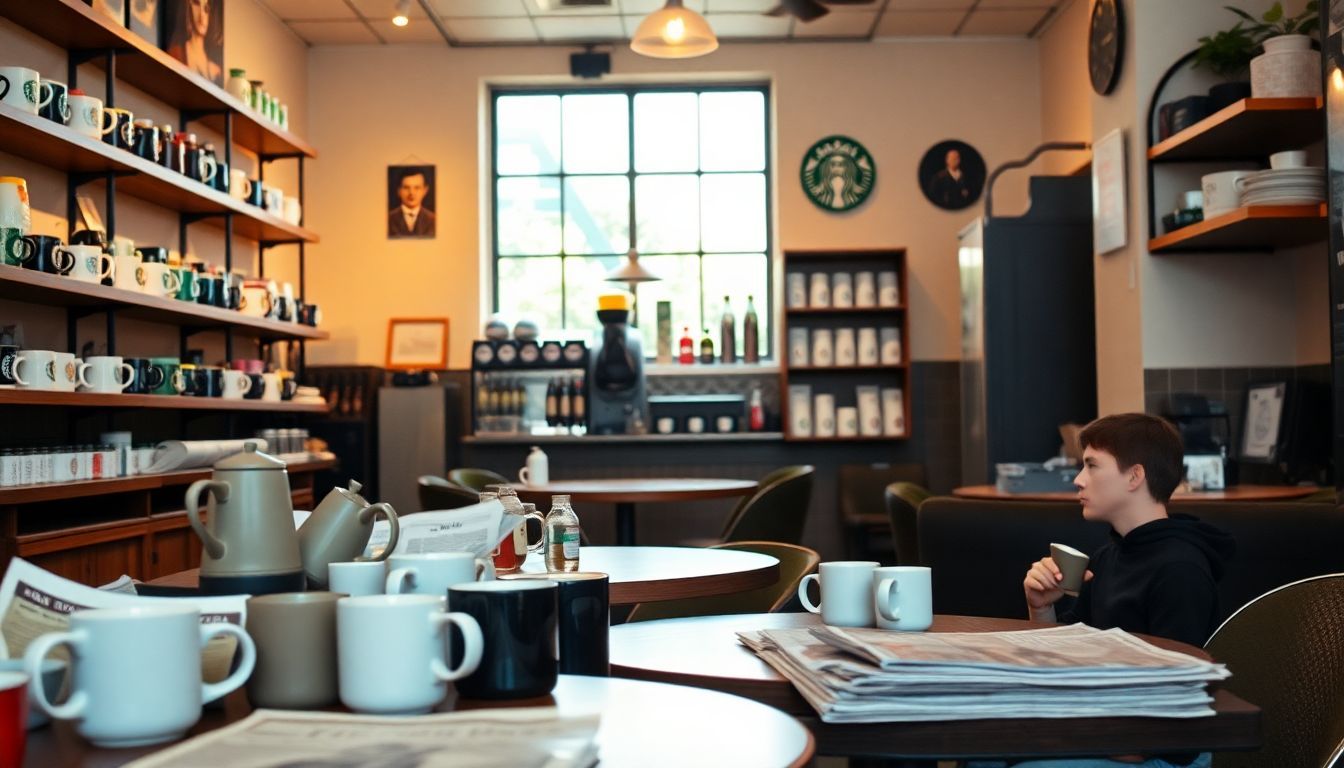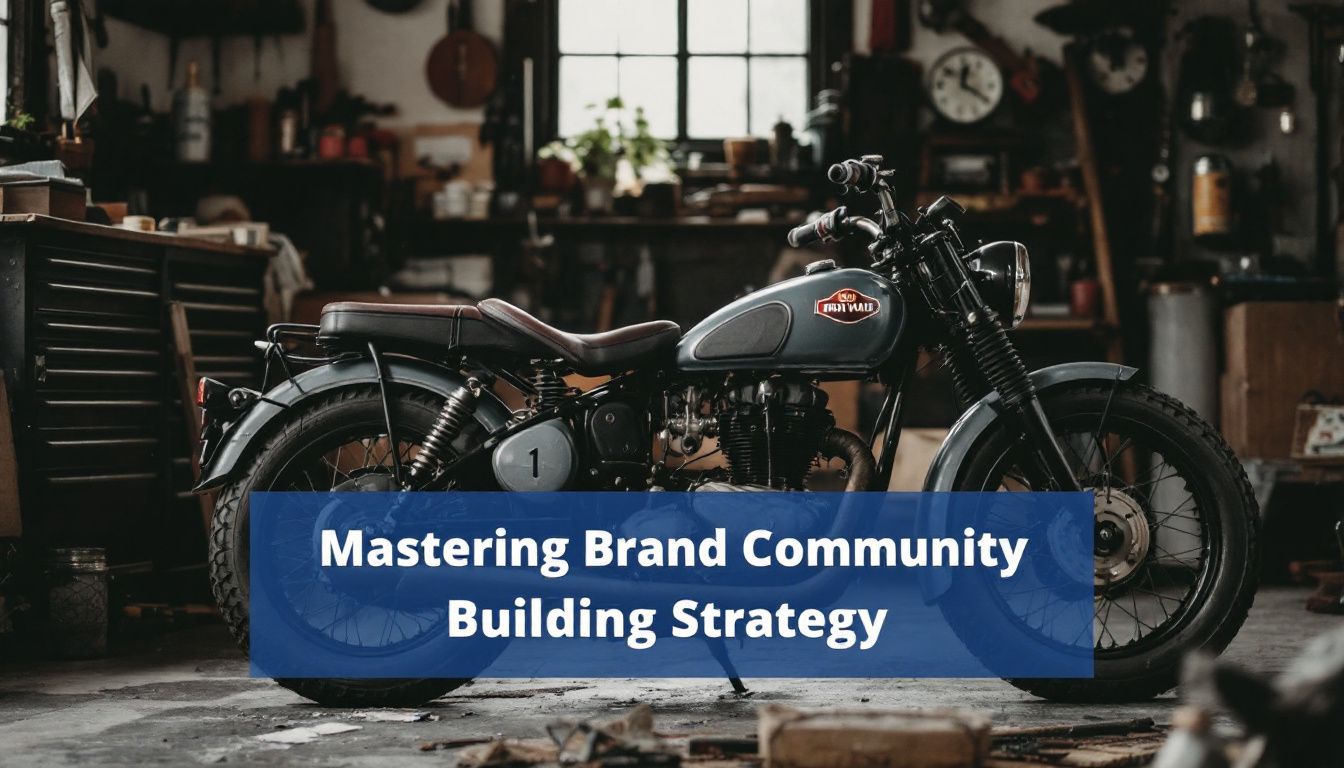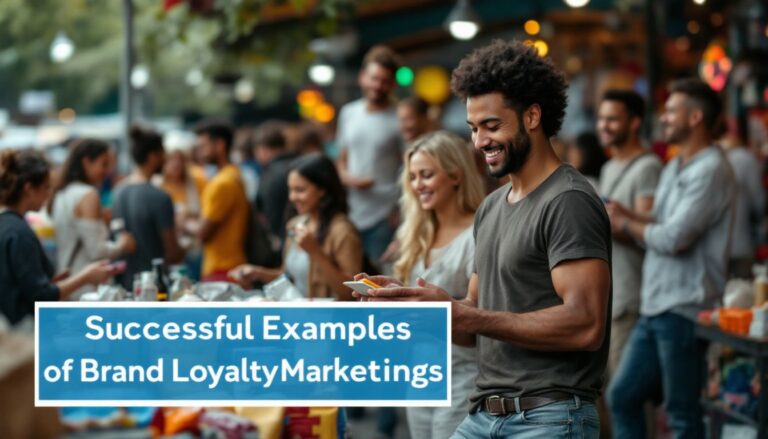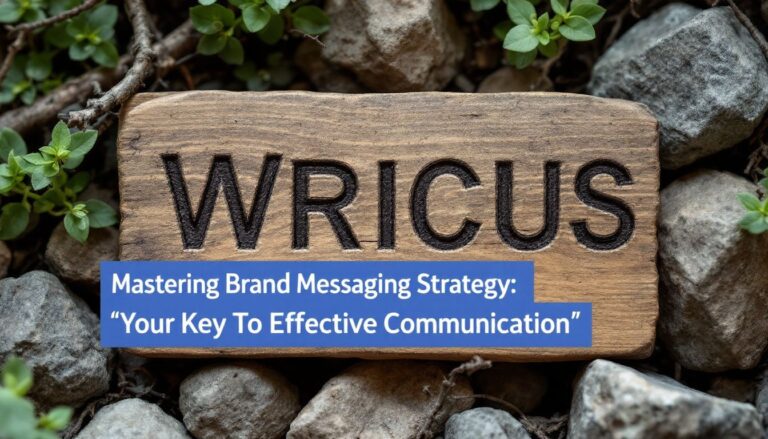Are you finding it hard to build a strong brand community that keeps your customers connected and loyal? I faced this challenge myself. But after some deep research—and helpful insights from Harvard Business Review experts Susan Fournier and Lara Lee—I learned how Harley-Davidson overcame tough times by growing an engaged community around its brand. 3 In this post, I’ll share clear strategies to help you build active communities around your top products, increase interaction through user-generated content, and measure success effectively. 2 Keep reading—these tips can reshape the way you market! 1
Key Takeaways
- Brand communities turn everyday buyers into loyal promoters—fans who share content and spread word-of-mouth, helping companies cut ad costs.
- Strong communities have a clear brand message, pick the right platform, and offer loyal fans special perks.
- LEGO Ideas lets fans send in their own product ideas—some even become real LEGO sets—boosting loyalty and building lasting partnerships.
- Starbucks Rewards brings in 40% of Starbucks UK’s earnings, driven by customers returning again and again—showing that community loyalty grows profits.
- Lululemon hosts over 4,000 local fitness events each year, skipping traditional point systems and building connections through personal relationships instead.
Understanding Brand Communities

Brand communities unite people who share a passion for the same brand. They’re more than casual fans—they become active supporters and partners in a brand’s story. These groups grow through common values and interests, beyond a single product.
Think about Apple fans camping overnight for the latest iPhone, or Harley-Davidson riders meeting up for weekend road trips. These people connect deeply through shared enthusiasm. The real magic occurs as occasional buyers turn into vocal advocates, spreading excitement about products they appreciate.
LEGO Ideas is a great example: fans submit their own set designs, and some even end up as actual products. This creates loyalty, since community members see their ideas respected and appreciated. 1
Successful communities rely on clear brand values matching the beliefs of their members. Starbucks built community by making coffee shops inviting hangouts—a comfortable space away from home and work.
The best brand communities give members more than just a product—they provide a feeling of belonging. Members need places to share feedback, exchange stories, and make meaningful relationships.
This transforms occasional customers into lifelong fans, willingly talking up the brand to others. Core members naturally become brand ambassadors, attracting new customers through genuine word-of-mouth endorsements.
Benefits of Building Strong Brand Communities
I witness the magic that great brand communities create every day. They turn regular buyers into passionate fans—these folks naturally spread the word about your products. Fans start creating content like photos, reviews, and personal stories…stuff others trust far more than ads.
My favorite part? It saves you tons on marketing costs! You spend way less money on ads, while your community does the heavy-lifting.
And the stats back this up. Companies with solid communities easily charge higher prices on popular products without losing customers. They also don’t have to give away as many discounts to keep people coming back—real win-win stuff.
Your fans feel special and your profits grow. 3
But it’s more than just extra cash in your pocket. A tight community gives quick, honest feedback—telling you clearly what’s working and what’s not. This helps you fix issues quickly and discover new opportunities.
These groups become idea-generators for fresh products. Lots of top companies get their best ideas directly from their most involved fans.
There’s also an emotional bond that happens. Community members hang around much longer than shoppers who chase deals. They stay loyal—even if cheaper options appear elsewhere—because they feel connected to something bigger than just spending money. 2
Core Strategies for Building a Brand Community
Let me share four key ways to build your brand community that will turn fans into family – from setting clear values to picking the right online home for your tribe. Keep reading to learn how these simple steps can help you create a space where people don’t just buy your products…
they live your brand!
Defining your brand’s purpose and values
I always start building brand communities with a clear mission, vision, and voice. Your brand’s purpose needs to shine through everything you do—it’s your “why”, the reason people really connect with your business. This strong foundation not only helps to attract like-minded individuals but also fosters loyalty and engagement among community members. By mastering brand strategy for launches, you create a cohesive narrative that resonates with your audience and drives excitement. Ultimately, this aligns your community’s values with your brand, creating a powerful space for connection and growth.
Drunk Elephant nails this by making skincare products without harmful ingredients. 4 The values you choose become the backbone for your whole community. From my experience, brands that clearly show their values attract loyal followers who feel the same way.
Your beliefs aren’t just pretty statements on your website—they shape how you speak, what you make, and who feels drawn to your tribe. Warby Parker gets this right—they blend literary style with actual community initiatives tied directly to their core values. 5
Identifying and engaging the target audience
I get to know exactly who my audience is before building a brand community. Creating clear customer personas helps me spot their needs, traits, and common struggles. 4 My marketing team keeps an eye on the content customers prefer, the platforms they use most, and what makes them eager to hit “follow.” Some brands do great with Facebook groups—but others might see better results on Instagram or on special online forums.
To keep my community involved, I switch up strategies depending on what clicks. Gymshark does this well—they organize influencer tours and regularly check online feedback to keep followers engaged.
I measure success by member retention and user-created content, rather than total follower numbers. 4 The emotional connection makes the difference—customers stay loyal to brands they genuinely care about, not brands they simply buy things from.
Creating a compelling value proposition
Once you know who your ideal fans are, give them a solid reason to join your community. Your value proposition should directly match what fans really want. Hero products play a big role here—often driving 30% or more of overall sales. 6 Crocs, for example, took their classic clog to new heights through collabs with Justin Bieber and Balenciaga. These partnerships created buzz and excitement—exactly the kind of spark that fans look for.
A strong value proposition means more than selling products. Fans want clear benefits linked to their desires—exclusive perks, special access, or a feeling of belonging. My experience with brand communities highlights these elements as key reasons people stay involved.
You can boost this sense of community easily—sharing hero products on social media, adding fun, interactive content to your website, or holding special member-only events. Make it simple, clear, and attractive—and your community will stick with you.
Selecting the right platform for your community
I choose platforms based on where my audience spends time. Forums are perfect for deeper talks—Spotify’s community forum lets fans swap playlists, ideas, and music tips. Social media brings other perks too.
Ring Concierge built a dedicated Instagram crowd by posting eye-catching photos. Visme made a helpful Facebook group for quick design advice. For businesses aiming at purchases, reward programs work wonders—Starbucks Rewards, for example, turns casual buyers into loyal fans.
Some brands prefer more control, turning to third-party tools like Slack or Mobilize for easy, organized chats. The best platform fits the voice of your brand and keeps your followers engaged with little effort.
In past projects, I noticed choosing poorly can stop a community in its tracks, right from the beginning. 7
Fostering Engagement Within Your Brand Community
Engagement is the heart of any brand community. I need to keep my members talking, sharing, and coming back for more.
Encouraging user-generated content
I love using customer-generated content to grow my brand community quickly. 8 Photos, videos, social posts, and genuine reviews—all shared by customers—show real-life views of my products.
Hashtag contests are definitely my most effective strategy. Fans post their own experiences, and I pick great ones to feature, making sure to acknowledge each creator. Sharing fan content on my Instagram page and website helps people feel noticed and appreciated—part of something real.
Connecting personally with fans who post content does wonders for my community. I regularly comment on their posts, like their photos and videos, and share their stories. And the data backs me up—brands featuring customer content get higher trust ratings, and even achieve better conversion rates.
Highlighting customer contributions on official channels boosts engagement and builds loyalty naturally. Doing this lets me spend less on marketing, while creating genuine connections paid ads can’t achieve.
Hosting interactive events and discussions
I organize local events, like wellness workshops and festivals, to bring my brand community together in person. Events like these let fans connect easily and naturally—Gymshark does a great job of this with influencer tours that spark real conversations.
Digital sampling tools also help, letting community members test products online before buying. These get-togethers let people exchange ideas, building stronger bonds with the brand.
The real magic happens during these moments—customers start feeling heard and appreciated. 9
Interactive talks succeed most when covering topics my audience actually cares about. Those discussions give my brand useful insights. The laid-back setting helps attendees feel comfortable enough to speak openly.
Events don’t have to be fancy—even casual online Q&A sessions help build loyalty. The community becomes stronger every time members connect at these informal meetups.
Rewarding loyal members with exclusive benefits
After throwing great community events, reward the folks who stay connected. I give loyal supporters special perks, stuff they can’t find elsewhere. It strengthens our connection, making them feel appreciated. 10 Offering exclusive access or early product previews boosts brand loyalty big time.
Take Starbucks Rewards as an example—their points program gets this idea right. Their Gold Level members get freebies like birthday drinks, a small gesture with big impact. Those simple perks turn everyday customers into enthusiastic brand promoters.
People talk—they tell friends, spread good words, bringing others into the fold. Community momentum grows faster when members know they’re valued. Celebrating your biggest fans costs less than chasing new buyers, yet creates genuine, powerful brand love that’s priceless.
Measuring Success in Brand Community Building
I use SMART goals to easily track success in my brand community. 11 They let me see real progress through clear, simple numbers. My favorite metrics? Engagement rates, member growth, and how many community members become buyers.
A strong Net Promoter Score reveals customers truly enjoy my brand—and happily recommend it to their friends.
For instance, one company ran extra tests on their community strategies and ended up increasing yearly sales by 10%. That example shows clearly—stronger communities lead to loyal customers who spend more.
Good tracking doesn’t require fancy tech tools; just regularly checking data aligned closely to business goals works perfectly fine.
Examples of Successful Brand Communities
Let me show you some real brands that built amazing communities. These examples will give you ideas for your own brand community.
LEGO Ideas
I really love LEGO Ideas—it turns regular fans into real creators. Users can send in their own LEGO designs, then get comments and support from fellow fans. And here’s the coolest thing—if your creation earns enough votes (around 10,000), LEGO might actually turn it into an official set! Last year, my cousin’s space station design hit that magic 10,000 number—pretty amazing.
Plus, LEGO stays in touch with what fans truly want through this kind of community. 12
This brand community creates strong loyalty, because members get to feel like real partners in the process of making new products. It helps LEGO save on marketing, since enthusiastic members naturally spread the word about fresh LEGO sets.
When fans feel involved, they connect more deeply to the brand than through standard ads. The community keeps growing—successful designers motivate new creators to step up and share their cool ideas too.
Starbucks Rewards
Starbucks Rewards does a great job building a community that boosts business results. What I enjoy most is how smoothly they blend digital perks and in-store benefits—right within their app.
Members get points on every purchase, quickly adding up to free coffee and snacks. In fact, repeat visits from Rewards members generate 40% of Starbucks’s UK revenue alone. 13 And with over 100 million weekly transactions across the globe, Starbucks has plenty of data to offer personalized deals to each customer.
Ordering through the app is fast and easy—the bonus is it creates a feeling of community. Customers also get special touches like birthday treats, plus early tastes of new menu items.
These thoughtful perks help people feel valued.
The loyalty program succeeds because it gives real benefits while keeping Starbucks top-of-mind. Customers might sign up for free stuff at first, but they stay involved due to the welcoming sense of community.
Starbucks Rewards shapes casual visitors into regular fans who return more often—and these fans spread the word to friends and family, boosting Starbucks’s brand image.
Another strong example is Lululemon, which builds community through its lifestyle focus. 14
Lululemon’s lifestyle community
Lululemon builds loyalty a bit differently from Starbucks—with community connections rather than reward points. I’ve noticed Lululemon isn’t just about selling yoga gear; it’s about creating a genuine fitness family.
Their strategy is simple: bring together people who love staying active. Each year, they host more than 4,000 local events where folks gather to work out, hang out, and form friendships. 15
One good example is their Sweatlifestyle Festival. It’s a relaxed outdoor gathering that mixes fitness classes with casual workshops, helping people bond and share good times. At these events, Lululemon puts real relationships ahead of profits—keeping things informal, personal, and friendly.
This approach builds brand fans who truly care, making them feel part of something bigger than just shopping.
How Can Successful Brand Loyalty Marketing Strategies Enhance Community Building?
Building a strong community around a brand can stem from effective brand loyalty marketing strategies examples. These strategies not only foster customer trust but also encourage engagement and collaboration among consumers. When customers feel valued, they become advocates, creating a loyal community that enhances the brand’s visibility and strengthens relationships.
Conclusion
Creating a strong brand community takes patience—and genuine effort. I’ve noticed how brands like LEGO and Starbucks build welcoming spaces, so their fans feel heard and appreciated.
To succeed, your community needs clear values, suitable platforms, and reasons for people to join and stay involved. Listen closely to your members, share engaging content, and make each person feel special.
Great communities turn everyday customers into enthusiastic supporters—people who naturally talk about your brand, better than any ad ever could.
References
- ^ https://brandmasteracademy.com/brand-community/
- ^ https://www.socialnative.com/articles/why-build-a-brand-community/ (2024-02-28)
- ^ https://hbr.org/2009/04/getting-brand-communities-right
- ^ https://www.business.com/articles/building-brand-community/ (2024-09-13)
- ^ https://sproutsocial.com/insights/brand-community/
- ^ https://bettermode.com/blog/building-brand-community
- ^ https://online.hbs.edu/blog/post/brand-community
- ^ https://215marketing.com/resources/user-generated-content-and-community-building-encouraging-trust-and-engagement-by-garrett-gillin/
- ^ https://bettermode.com/blog/brand-community-building
- ^ https://www.linkedin.com/pulse/brand-building-through-community-engagement-your-connecting-zaki-szsyf
- ^ https://lifesight.io/blog/measuring-brand-community-metrics/
- ^ https://www.linkedin.com/pulse/community-engagement-brick-lego-ideas-success-kinir-gandhi-i4bvc
- ^ https://loyaltylion.com/blog/scale-success-story-starbucks-rewards-program (2025-02-27)
- ^ https://blog.smile.io/8-best-brand-communities/
- ^ https://www.social.plus/blog/lululemons-community-led-growth-strategy







